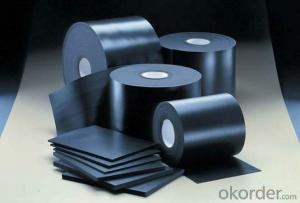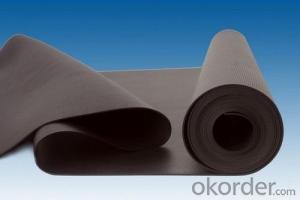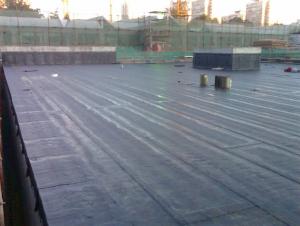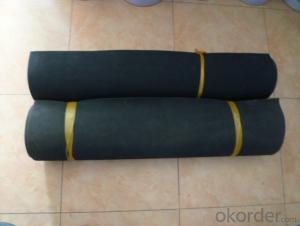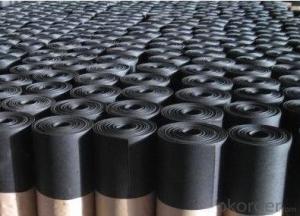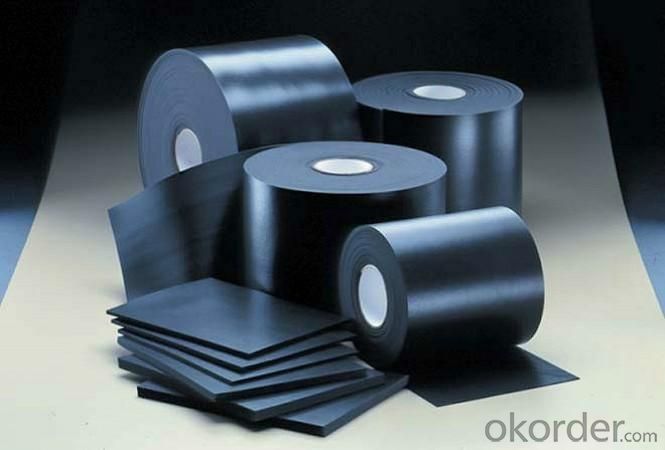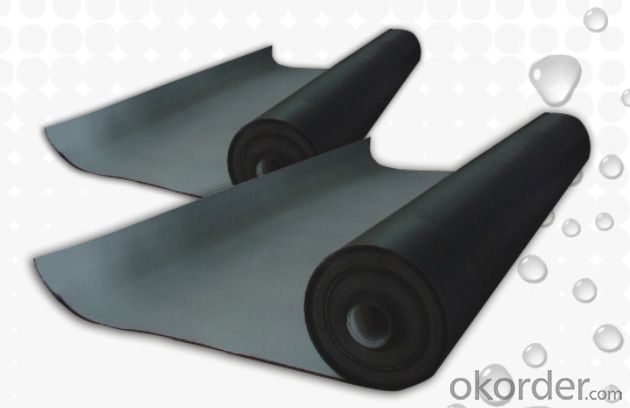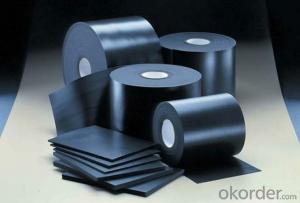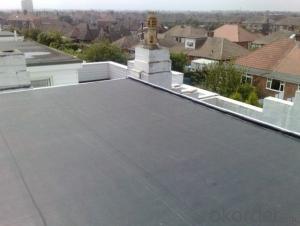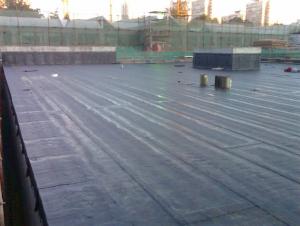EPDM Coiled Rubber Waterproof Membrane for Roof Waterproof System
- Loading Port:
- Shanghai
- Payment Terms:
- TT or LC
- Min Order Qty:
- 10000 m²
- Supply Capability:
- 1200000 m²/month
OKorder Service Pledge
OKorder Financial Service
You Might Also Like
EPDM Coiled Rubber Waterproof Membrane for Roof Waterproof System
Description Of EPDM Coiled Rubber Waterproof Membrane for Roof Waterproof System:
1. EPDM waterproof membrane is made from ternary ethylene-propylene rubber, which is for waterproofing of exposed and non-exposed applications.
2. EPDM waterproof membrane production adopts the world-advanced equipment of cold feeding extrusion and continuous vulcanization technology.
3. EPDM waterproof membrane is of high elasticity among high polymer waterproof materials and becomes a world-popular waterproofing material.
Main Features of EPDM Coiled Rubber Waterproof Membrane for Roof Waterproof System:
1. Excellent physical and mechanical performance
2. High tearing resistance
3. Good deformation adaptability
4. High puncture resistance
5. High aging resistance
6. UV resistance
Specifications of EPDM Coiled Rubber Waterproof Membrane for Roof Waterproof System:
| Material | EPDM Rubber |
| Size | 1.2m (width)*20m (length) or customized, weldable type 2.05m or 4m width |
| Thick | 1.2mm, 1.5mm, 2.0mm |
| Type | Vulcanized & Weldable |
| Pattern | Non-reinforced (homogeneous) |
| Certificate | ISO9001/14001 |
Applications of EPDM Coiled Rubber Waterproof Membrane for Roof Waterproof System:
1.Roofs, Basement, Toilets
2. Industrial and civil building waterproofing
3. Geosynthetic liner for swimming pool, channels, irrigation system
4. Especially suitable for projects with high requirements in durability, anti-corrosion and deformation.
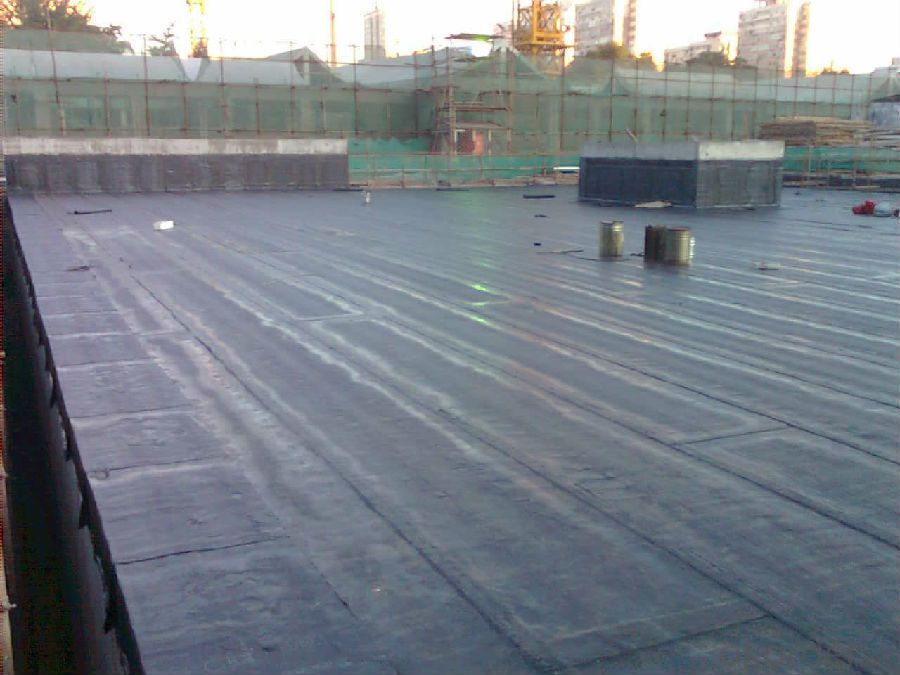
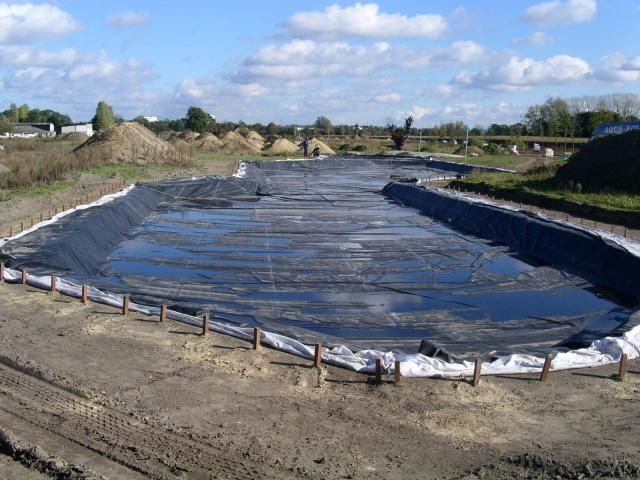

IMages of EPDM Coiled Rubber Waterproof Membrane for Roof Waterproof System:
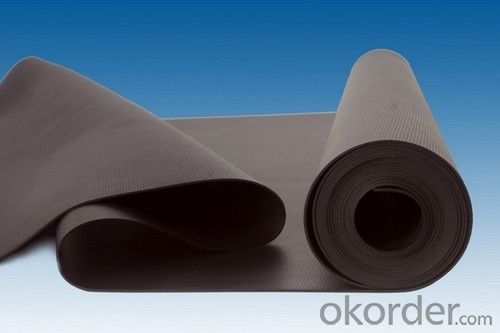
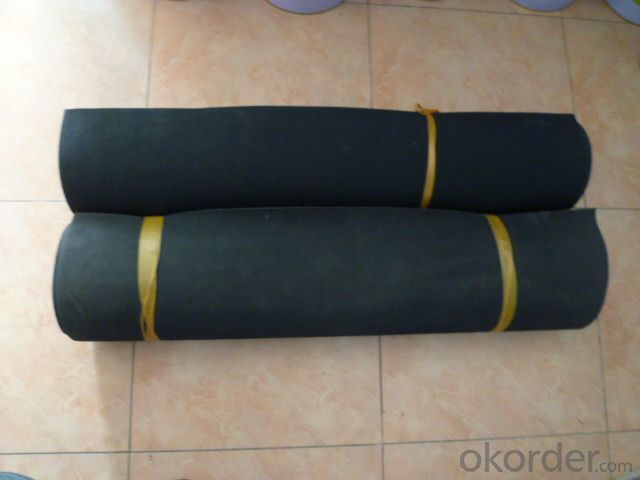


FAQ of EPDM Coiled Rubber Waterproof Membrane for Roof Waterproof System:
1. What are we supplying?
We are specialized in producing Colorful Asphalt Roof Shingle, SBS/APP modified bitumen waterproof membrane, Self adhesive bitumen waterproof membrane, PVC waterproofing membrane, EPDM rubber roofing membrane, Single Component Polyurethane Waterproof Coating, and Spray Polyurea Waterproof Coating
.
2. How Many years experience do we have?
We have been exported to more than 20 countries in the past 15 years.
3. How long do we usually reply your request?
We always reply our customer within 24 hours.
- Q: Can a waterproofing membrane be used in elevator pits?
- The utilization of a waterproofing membrane in elevator pits is possible. Due to their subterranean location, elevator pits are susceptible to water intrusion from sources like groundwater or moisture. A waterproofing membrane acts as a safeguarding layer that is applied to the walls and floor of the elevator pit, effectively obstructing the passage of water. This protective barrier prevents water from causing harm to vital components of the elevator system, such as electrical equipment, pumps, and hydraulic systems. Implementing a waterproofing membrane in elevator pits substantially diminishes the likelihood of water damage and corrosion, ensuring the elevator's safe and efficient operation.
- Q: Does a waterproofing membrane require any specific surface preparation for tile installations?
- Specific surface preparation is required for tile installations when using a waterproofing membrane. The longevity of the tile installation and the success of the waterproofing membrane depend on proper surface preparation. Before applying a waterproofing membrane, it is vital to confirm that the surface is clean, dry, and free from contaminants such as dust, debris, oil, grease, or any loose or crumbling materials. Thoroughly cleaning the surface is necessary and removing any existing tile, adhesive, or grout may be required. In addition to cleanliness, achieving a smooth and even surface is important. Any uneven areas or imperfections should be leveled and patched with an appropriate patching compound. This step prevents water from pooling or seeping beneath the waterproofing membrane, which could cause issues like leaks, mold growth, or damage to the tile installation. Moreover, ensuring the surface is structurally solid and stable is essential. Addressing and repairing any cracks, weak areas, or signs of instability before installing the waterproofing membrane is necessary. This establishes a sturdy foundation for the tile installation and prevents future problems. To summarize, proper surface preparation is critical for the success of both the waterproofing membrane and the tile installation. It guarantees a clean, smooth, and stable surface, which is essential for the membrane to adhere effectively and provide reliable waterproofing. Following the manufacturer's guidelines and seeking professional advice if necessary will help ensure correct surface preparation for a durable and dependable tile installation.
- Q: Can a waterproofing membrane be used for swimming pool decks and patios?
- Yes, a waterproofing membrane can be used for swimming pool decks and patios. Waterproofing membranes are designed to create a barrier against water infiltration, making them ideal for protecting these outdoor surfaces from water damage and ensuring their longevity.
- Q: Can a waterproofing membrane be used in areas with heavy foot traffic or vehicle loadings?
- Yes, a waterproofing membrane can be used in areas with heavy foot traffic or vehicle loadings. However, it is important to choose a membrane that is specifically designed for such applications to ensure durability and longevity. These specialized membranes are typically thicker and more resistant to wear and tear. Additionally, consideration should be given to the type of traffic or loading that the area will experience. For example, areas with vehicular traffic may require a membrane with higher compressive strength to withstand the weight of vehicles. In summary, while waterproofing membranes can be used in high-traffic or heavy loading areas, it is crucial to select the appropriate type of membrane that meets the specific demands of the application.
- Q: Can a waterproofing membrane be used on drywall surfaces?
- No, a waterproofing membrane is typically not used on drywall surfaces. Drywall is not designed to be waterproof and would not provide a suitable substrate for the membrane.
- Q: Can a waterproofing membrane be used in residential or commercial structures?
- A waterproofing membrane is suitable for both residential and commercial structures. Its purpose is to establish a barrier that obstructs water from entering the building. These membranes are frequently utilized in areas like basements, foundations, roofs, and bathrooms to safeguard against water damage. In residential structures, they are beneficial in preventing water leaks, mold formation, and structural decay. In commercial structures, they serve to protect valuable assets, such as equipment and inventory, and ensure a safe and healthy environment for employees and customers. Moreover, waterproofing membranes can be applied to both new construction projects and existing structures, making them a versatile solution for any type of building.
- Q: Can waterproofing membranes be used on concrete slabs?
- Concrete slabs can indeed utilize waterproofing membranes. In fact, it is a widely adopted technique to shield concrete slabs from water harm. The purpose of waterproofing membranes is to establish a barrier that halts water infiltration into the concrete surface. This becomes particularly crucial for regions susceptible to moisture, like basements, balconies, or swimming pools. Through the application of a waterproofing membrane, the concrete slab effectively safeguards itself against water infiltration, which might otherwise trigger cracks, erosion, or the growth of mold. Moreover, these membranes have the added benefit of bolstering the overall longevity and durability of the concrete slab.
- Q: Are waterproofing membranes UV resistant?
- Indeed, the majority of waterproofing membranes boast UV resistance. Given their frequent exposure to sunlight, UV resistance is a crucial attribute for these membranes. Over time, the degradation and deterioration caused by UV rays can significantly impair the effectiveness and durability of materials, necessitating the inclusion of UV-resistant additives or coatings by manufacturers. This incorporation of UV resistance safeguards the integrity and performance of the membrane, guaranteeing enduring protection against water infiltration.
- Q: Can a waterproofing membrane be used in residential construction?
- Yes, a waterproofing membrane can be used in residential construction. Waterproofing membranes are commonly used in various areas of a residential property, such as roofs, basements, bathrooms, and foundations. These membranes are designed to prevent water penetration and protect the structure from moisture-related damages. By installing a waterproofing membrane, homeowners can ensure that their property remains dry and free from water leaks, which can lead to mold growth, structural deterioration, and other costly issues. There are various types of waterproofing membranes available in the market, including sheet membranes, liquid membranes, and self-adhering membranes, each with its own advantages and suitability for specific applications. Consulting with a professional contractor or architect can help determine the most appropriate waterproofing membrane for a particular residential construction project.
- Q: Is a waterproofing membrane resistant to saltwater or salt damage?
- Yes, a waterproofing membrane is typically resistant to saltwater or salt damage. Waterproofing membranes are designed to provide a barrier against water and moisture, and they are commonly used in various applications where exposure to saltwater or salt is expected, such as in marine environments or near coastal areas. These membranes are often made from materials that are specifically formulated to withstand the corrosive effects of saltwater or salt. Additionally, the installation of a waterproofing membrane includes proper preparation and sealing techniques to ensure its resistance to saltwater or salt damage. However, it is important to note that the specific resistance of a waterproofing membrane to saltwater or salt damage may vary depending on the type and quality of the membrane used. Therefore, it is recommended to consult with a professional or manufacturer to ensure the appropriate membrane is selected for the specific application and environment.
Send your message to us
EPDM Coiled Rubber Waterproof Membrane for Roof Waterproof System
- Loading Port:
- Shanghai
- Payment Terms:
- TT or LC
- Min Order Qty:
- 10000 m²
- Supply Capability:
- 1200000 m²/month
OKorder Service Pledge
OKorder Financial Service
Similar products
Hot products
Hot Searches
Related keywords
